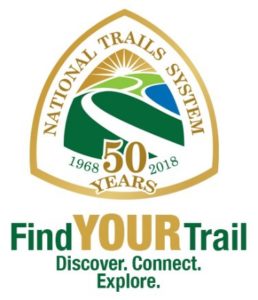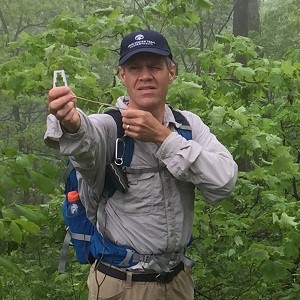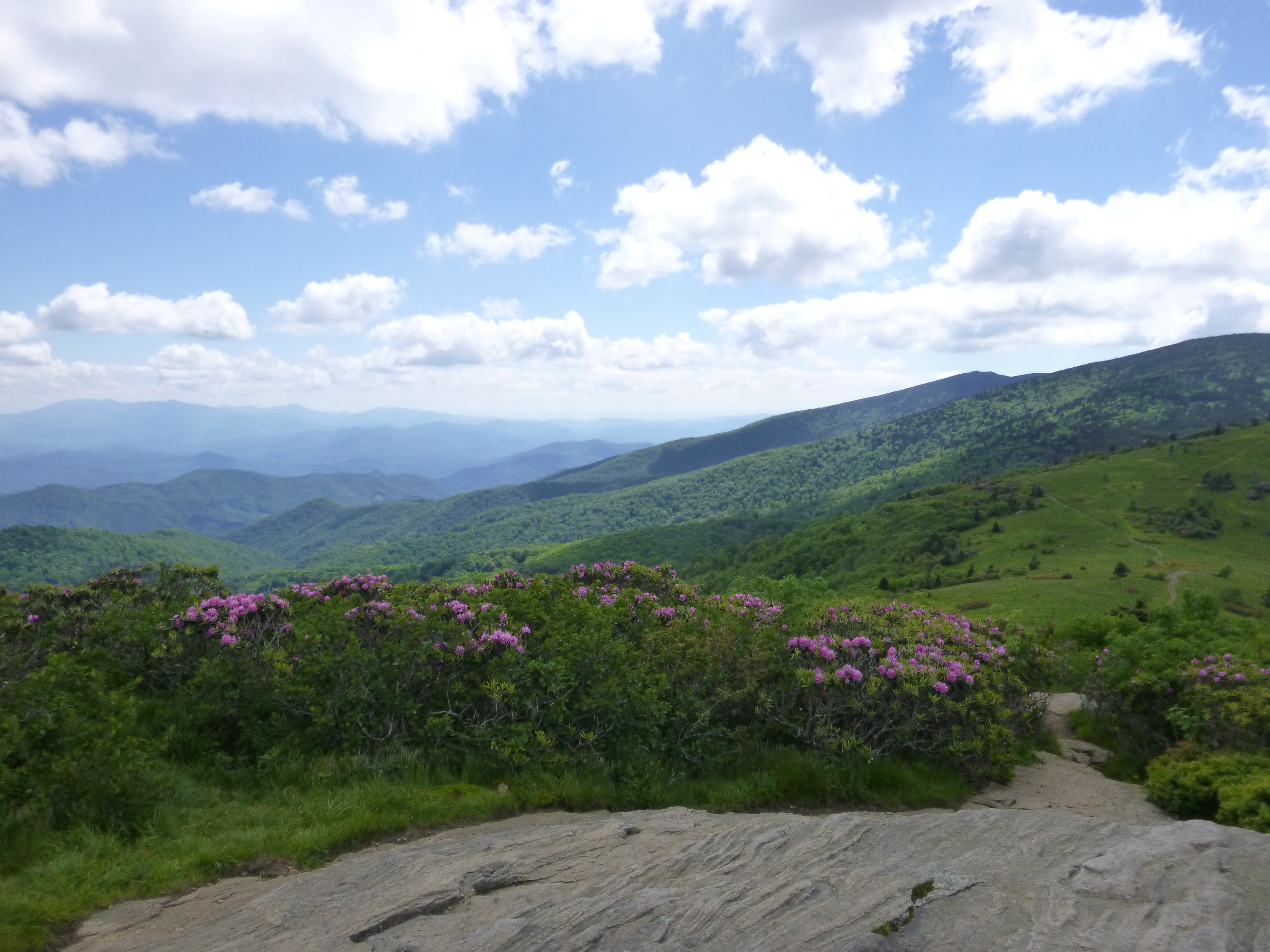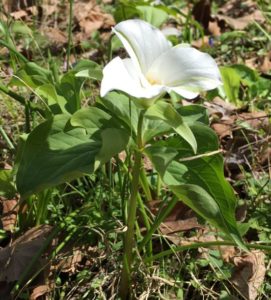Kim Peters is the ATC’s Volunteer of the Month for August 2018!
Kim has been an active TEHCC member for more than 18 years, and over time, has taken on more responsibility by providing trail maintenance leadership. In 2010, she began serving as TEHCC Maintenance Coordinator engaging many different volunteers, from new members to retirees, in various maintenance activities. TEHCC typically has more than 13,000 hours invested in the Appalachian Trail each year, by roughly 450 different volunteers, across regular outings and special events. Therefore, the role of volunteer coordinator is critical to our club’s success
A search of club newsletters reveals that Kim started out hiking with TEHCC on April 1, 2000 with a trip to the Sand Cave/White Rocks in Ewing, VA. Since then, her retirement has enabled her to spend more time in the outdoors through both hikes (TEHCC Hiker of the Year in 2001 and 2007) and trail maintenance. Kim has hiked the Appalachian Trail from Springer Mountain to Harper’s Ferry. Over the years, she has logged personal maintenance time of nearly 5,000 hours over 600 events. Currently, Kim invests around 450 hours (~56 days!) each year; thus is the third most active TEHCC maintainer.
As Maintenance Coordinator, Kim recruits volunteers for our 36 trail sections and 15 shelters over 134 miles of the Appalachian Trail. She hosts a large winter meeting to kick off each new maintenance season with recognition, safety, and training. Inquiries from potential volunteers are matched with the weekly trail project crew, section groups, or a regular monthly outing. In 2012, Kim rebranded the third-Saturday events to “Hiking with Tools” to reach out to those who are new to maintenance, have a weekday job, or desire lighter tasks such as cleaning out waterbars, lopping rhododendron, breaking up fire rings, or painting blazes/shelters. This latter effort has been very successful in recruiting new maintainers of the Appalachian Trail.
The Tennessee Eastman Hiking & Canoeing Club sincerely thanks Kim for her service and leadership over the years. And congratulate her on being further recognized as ATC’s Volunteer of the Month for August 2018! Please contact Kim (atmaint@tehcc.org) if you’re interested in helping with the Appalachian Trail.


 Celebrate the National Trails System Act in 2018
Celebrate the National Trails System Act in 2018

